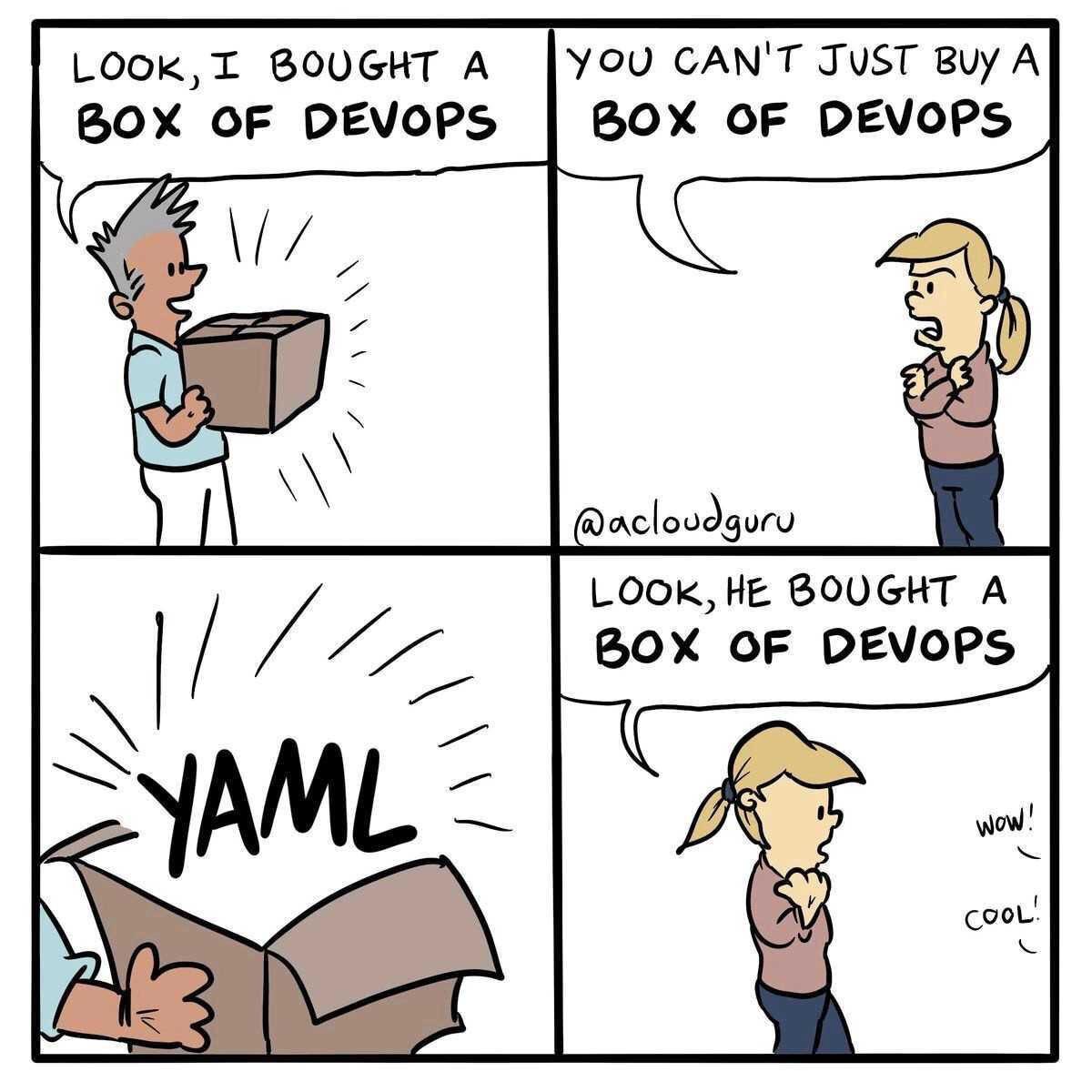this post was submitted on 12 Nov 2023
748 points (96.8% liked)
Programmer Humor
20039 readers
2133 users here now
Welcome to Programmer Humor!
This is a place where you can post jokes, memes, humor, etc. related to programming!
For sharing awful code theres also Programming Horror.
Rules
- Keep content in english
- No advertisements
- Posts must be related to programming or programmer topics
founded 2 years ago
MODERATORS
you are viewing a single comment's thread
view the rest of the comments
view the rest of the comments

That's because it is absolutely terrible. It is the first serious/real "language" I have encountered since Cobol where indent level has functional meaning. This is not good company to be in.
The python community would like to have a word with you.
Python has stricter rules about what can be cludged together and how.
Yaml is... Kind of nebulous, which is not a good thing for a data serialization format.
Yeah not a fan of YAML either. I simply don't see the benefit of getting rid of delimiters and replacing them with indentation. Yes, it does save several bytes, which might be important if you measure space in kilobytes I guess. It does provide cleaner files which may or may not be more readable.
It does not provide any advantages in parsing complexity. It does not provide any protection against typos.
I guess the same can be said of python, which forces indentation and therefore readable code formatting. Which is a problem that does not exist since the invention of code formatters and linters.
I like python for what it does but delimiters are actually useful in terms of readability. They provide an extra hint that the text you're about to look at conforms to a specific structure.
Oh god, parsing complexity. I actually tried writing a YAML parser in my free time before and boy was that not worth the headache. So many little things that complicate parsing and are ignored by majority of users!
I really like python, but I can agree that it's no-delimiters style can be... Confusing at times. I definitely had to hunt down bugs that were introduced by wrong indentation. That and the way it handles global/local variables, mostly.
I do appreciate not having to enclose every key in "", and being able to copy values - but if we want that kind of logic making our configs, why not just switch to writing configurations in Lua? It certainly has less footguns than YAML and it has the niceties like "I can just write
{key = "value"}instead of{"key": "value"}".Honestly that probably goes for any interpreted programming language that supports imports.
Many Javascript frameworks just put their configuration into -.config.js files in the project root. Which is a pretty elegant solution that does not require custom parsing. Just import the config and go nuts.
Compiled (and by extension bundled) software obviously requires a different approach, but at that point you should probably consider storing your config in some kind of database.
Maybe there just isn't a right answer to the config conundrum if all the general solutions are janky in some way.
Well, there's a few things I personally think are a must for a config format: